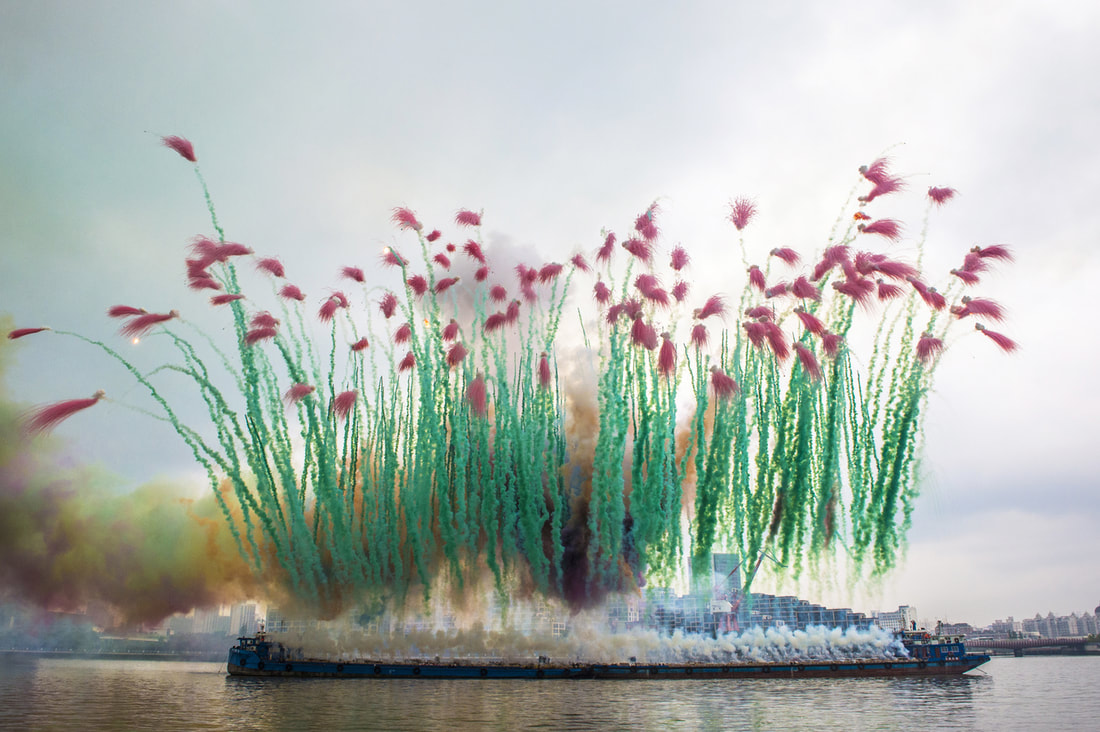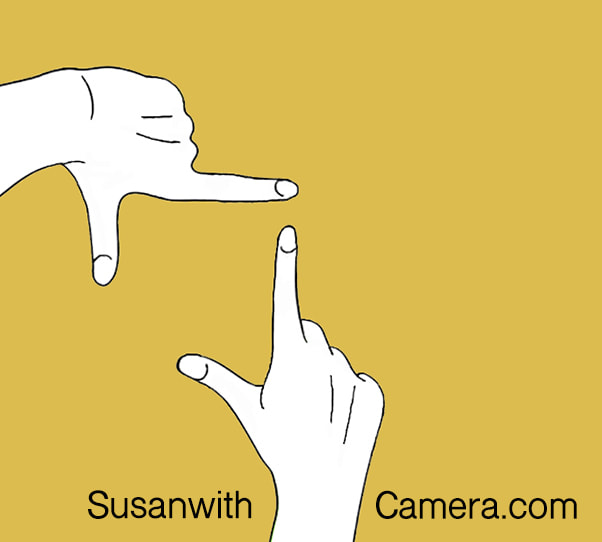|
Summer is lots of things to me - BBQ's with friends, camping, backpacking, kayaking, swimming. Notice a theme, here? The outdoors play an essential role in my calendar. The other factor, which can thwart the best laid plans, is fire. I am certain you've all heard the news surrounding the fires in Washington, Oregon, and California. Every year it seems we have a few weeks where we are ensconced in smoke from flames that are miles and miles away, or occasionally, right down the road. This led me to think about how art and artists play with fire. I was first reminded of Cai Guo-Qiang. (For those of you in the know, he was the artist responsible for the "Tumbling Tauruses" hanging in the lobby at the Seattle Art Museum.) Guo-Qiang works specifically with gunpowder, or huoyao - which means "fire medicine." Most recognized for his site-specific projects, his work features the use of "explosion events." Using large fireworks displays and extensive trails of gunpowder, his works have spanned landscapes, propelled off building tops, and ignited footsteps in rhythmic time across cities. Cai Guo Qiang, “Remembrance,” chapter two of Elegy, an explosion event for the opening of “Cai Guo-Qiang: The Ninth Wave,” Courtesy of photographer Lin Yi. One of Cai's most notorious explosion events was "Sky Ladder." The project, two decades in the making, had many false starts and stops. From bad weather, to security concerns, to forest fire risks, Cai was stymied with the process of seeking official permission. Eventually, he went ahead without it. “This is where I want to make a ladder to connect the Earth to the universe." Cai Guo Qiang, Sky Ladder (2015). Courtesy of Cai Studio/Netflix. Sky Ladder was realized in secret at Huiyu Island Harbour, Quanzhou, Fujian, on June 15, 2015 at 4:49 am, and was a dedication to his 100 year old grandmother, who died a month later. It was a fitting tribute, not only to his dear grandmother, but to the idea of gunpowder as being a "fire medicine," and one of China's most significant contributions to the world. “They were actually looking for an elixir to make themselves immortal,” said Guo-Qiang. The fireworks industry has clearly reaped the rewards of Cai's artistic innovation and use, and works alongside him to develop his creations and bring his increasingly complex visions to life. But these explosion events are only one side of Cai Guo-Qiang. He also harnesses the elements of the medium for his gunpowder paintings. Tree with Yellow Blossoms, Cai Guo-Qiang, 2009 Cai's gunpowder paintings are a spontaneous act of careful preparation. The thought-provoking designs are generally natural forms that generate a feeling of wildness and wind in the composition. Once drawn, he sprinkles gunpowder over the canvas, covers it, and ignites it. "There's always a prevalent sense of anxiety and uncontrollability in the work — and that's a lot like life," he explains. It's kind of hard to imagine, right? Watch this for a fantastic glimpse into his process. The use of fire to destroy is prevalent in art and art history. For example, in 1970, John Baldessari burned all of the paintings he created between 1953 and 1966. From the ashes of those paintings, he created a new piece entitled, "The Cremation Project." The piece consisted of the ashes of his work, which he baked into cookies and placed in an urn. The bronze plaque that accompanies the piece has the birth and death of each painting, as well as the recipe for making the cookies. With Cai and John, fire is used as a tool of renewal and expression. A way to both create, and recreate using the unpredictability of a medium known for destruction. In a sense, the cremation and explosion becomes a metaphor for the human life cycle in a piece of art. Joan Miró took a slightly different view. In the 1970's, angered and frustrated by the politics of Spain, Miró began a series of works he called "burnt and lacerated canvasses." ‘I love to work with fire. Fire has unforeseeable reactions. It destroys less than it transforms, it acts on what it burns with an inventive force which possesses magic. I wanted to paint with fire and by fire.’ ‘The artist does not live in bliss. He is sensitive to the world, to the pulsation of his time, to the events which compel him to act. This is bound to happen. This is not an intellectual attitude but a profound feeling, something like a cry of joy which delivers you from anguish.’ I don't think I could say it any better than that. Have a safe summer - and remember - always put your campfire out before you go. © Joan Miró, Burnt Canvas I, 1973.
|
AuthorMusings on business, womanhood, consulting, and things I find interesting. Archives
October 2022
Categories
All
|





 RSS Feed
RSS Feed